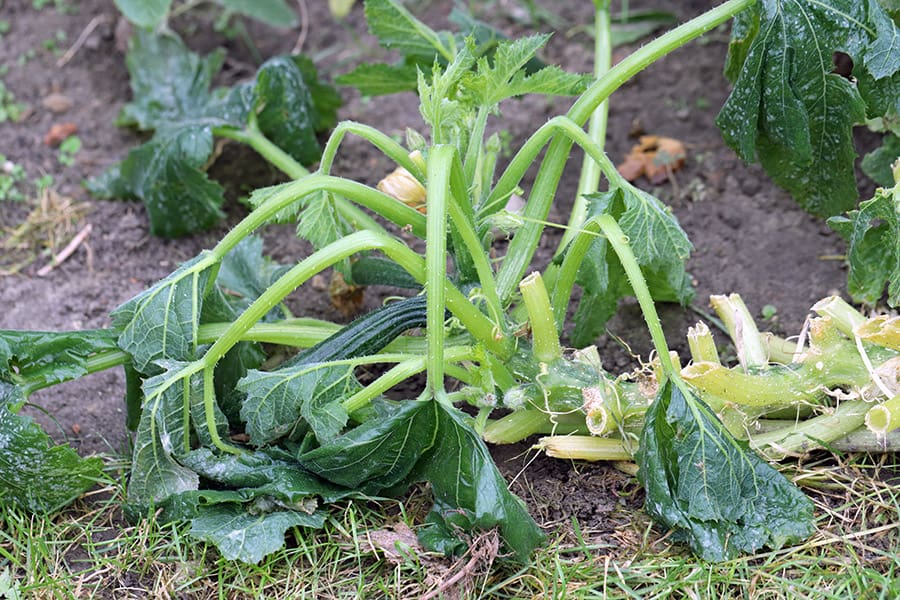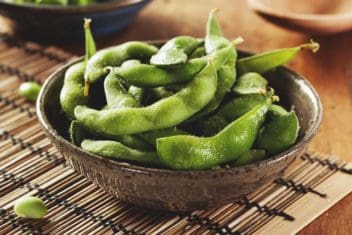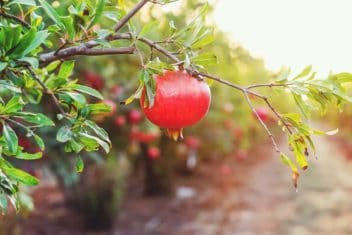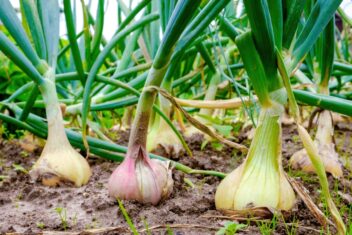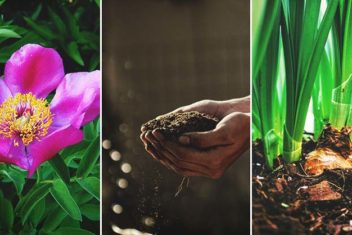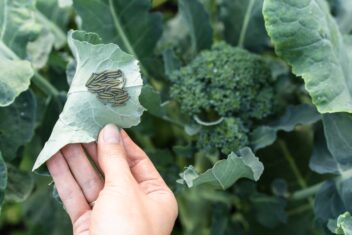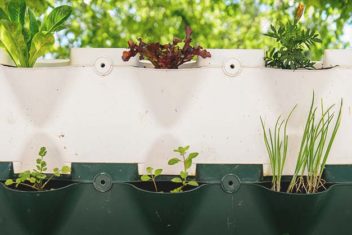Who doesn’t love growing zucchini? It’s a tasty crop that always provides way more food than you’ll need in one season. Normally zucchini is easy to grow, but sometimes you face problems that leave you scratching your head.
We’re talking about those problems that everyone inevitably encounters at some point, like fruit not forming, blossoms falling off, or yellowing leaves.
Let’s look at what the most common problems are and what you can do about them to make sure you get that big old load of zucchini.
1. Seeds Fail to Germinate

Normally zucchini seeds swiftly push through with their distinctive double-leaf green top. But if they aren’t coming up after a few weeks, the cause might be any of the following:
- The seeds are too old. Some seeds like to be planted within a couple of years and they struggle to germinate if they’re too old. Make sure your zucchini seeds aren’t all shriveled, bone dry or moldy. I prefer to buy new seeds each season, or if I save seeds, I use them the next year.
- The seed raising mix is old or poor quality. Make sure you use good quality seed raising mix and don’t reuse old mix.
- Too little water. If you’ve planted your seeds a little too deep, you may find a spray bottle won’t provide enough moisture to enable the seed to germinate. If you’ve planted the seed more than an inch deep, use a soaking technique rather than misting the surface of the soil. Just make sure the container or tray is well draining.
- It’s too cold. It’s best to start zucchini in a greenhouse or indoors if you live in an area that has a short growing season. The soil should be at least 60ºF. When the soil is too cold it can cause the seed to become sterile. One of the great things about zucchini seedlings is they transplant well.
- The seed rots. The seed is too old or you watered too much. Plant zucchini in well draining seed trays or pots with plenty of sunshine. If the soil is still wet, don’t add water.
2. Seedlings Die Off
It’s really annoying when you see wonderful seedlings emerge only to have them die off a few days later. Here’s why that may happen.
- Damping off. One moment the seedlings are healthy, the next they are shriveled up and dead on the soil surface. This is caused by fungi. To avoid damping off, buy seed from a reputable company and use good quality and fresh seed raising mix. Don’t over-water or crowd too many seeds in. If you reuse seed raising pots, make sure they are clean and free of old dirt and debris.
- Drought stress. Insufficient watering affects all plants, but it is especially hard on zucchini seedlings. Keep the soil moist until the seedling is well established, but be careful not to over-water – especially if the soil isn’t free draining. The root system of zucchini is quite large, so watering helps it spread and pull in as many nutrients as possible.
3. Slow Growth/Failing to Thrive
Once zucchini starts, it’s notorious for its rapid growth. If it appears to be struggling, it could be poor-quality soil.
Soil rich in well-rotted organic matter is your zucchini plant’s best friend. These plants are prolific producers, so they need plenty of food to provide energy for the plant to grow.
Aim for a soil pH of 6.5 and use a well-balanced fertilizer. Don’t be tempted to add excessive amounts of nitrogen for rapid growth. This will cause a lot of green leaves, but not so much fruit production.
4. Lots of Flowers But No Fruit
If you have tons of flowers on your zucchini but none of them are turning into fruit, there are two potential problems at play. First is a lack of pollination. Sometimes the bees and butterflies just don’t visit or can’t reach your plants. If that happens, the female flowers aren’t pollinated and they can’t form fruit.
Poor pollination often happens at the beginning of the season. You may get a lot of flowers that don’t become fruit, or fruit that starts to develop and then stops and falls off. Be patient with this. Temperatures may vary in spring and early summer, but once it becomes consistently warm, the plant will crop as you expect.
You can always help mother nature along by providing an environment that encourages pollinators to visit or by hand pollinating.
The second issue at play could be that the plant is sending out male fruits before the female fruits emerge. This is normal, since the plant wants to ensure that there are plenty of male flowers to do the job before it sends out female flowers. Just give it time.
5. The End of the Fruit Rots
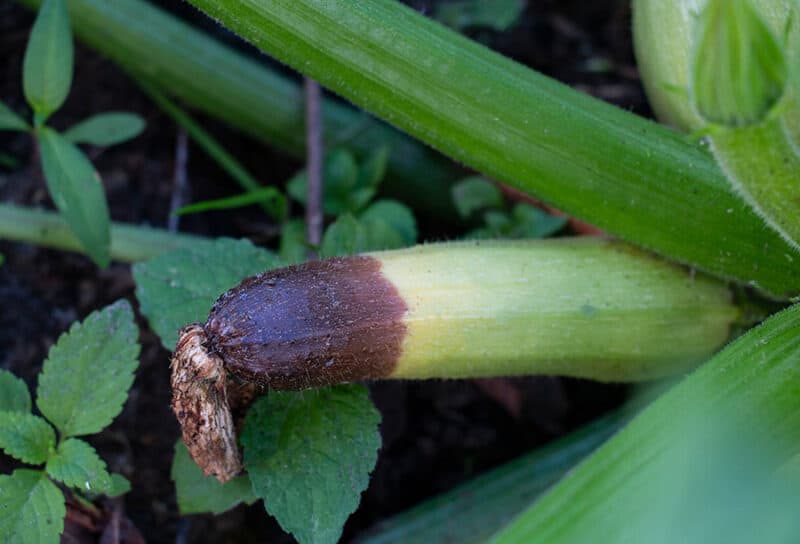
Zucchini suffers from blossom end rot just like tomatoes and eggplants do. It comes from a calcium deficiency in the plant, usually caused by inconsistent watering or, less often, not enough calcium in the soil. Use a well-balanced fertilizer, and don’t allow your zucchini to wilt from dry soil and then soak the ground with heavy water.
Feed and water consistently, but don’t overdo it. Once blossom end rot sets in, it is impossible to amend fix. You are better off planting new, fresh plants in nutrient-dense soil if you have enough time in the season.
6. The Fruit is Lumpy
You want glossy smooth-skinned fruit, so what’s with the lumps that make the zucchini look like they have a disfiguring disease?
You may have zucchini yellow mosaic virus. It’s not as common as diseases like powdery mildew, but it is certainly concerning. This virus can be present in seeds and also carried by aphids.
Buy quality seeds and prevent aphids with row covers and trap crops. Remove infected plants and throw them in the garbage, not the compost pile.
Replant new zucchini, but not in that same area. Rotate your crops every few years.
7. Parts of the Plant Are Wilting While the Rest Grows Well
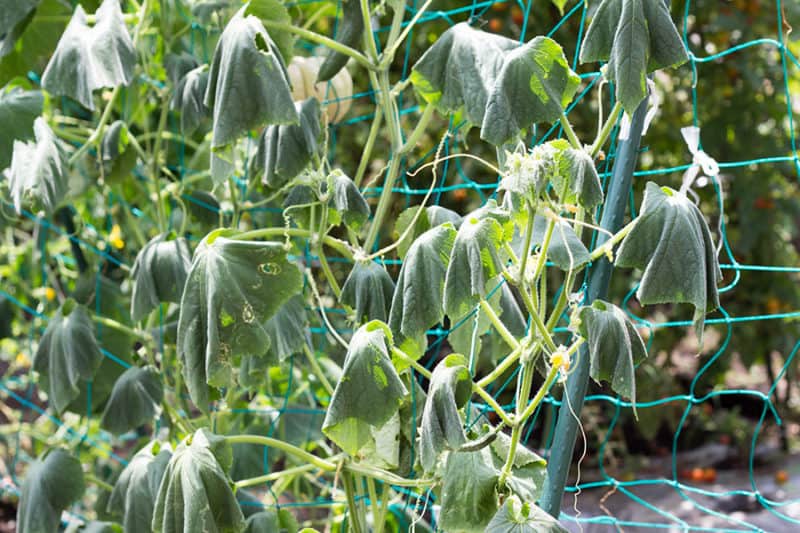
If you have this happen to your zucchini plant, it’s likely a bug called squash vine borer. This is especially true if there are no other signs of damage other than the wilting. Borers are little white worms that burrow into the stems of plants like zucchini, squash, and pumpkin. Take the wilted stems and cut them open because that’s the only way you see them.
The adults look like wasps but are red and black. Look around the base of the wilted parts of the plant and you may see yellow dust that is actually their droppings and debris from their burrowing, called frass.
The worms hate diatomaceous earth. Sprinkle this around the base of the plant and reapply after rain or watering. Use insecticides if you see a lot of the adults around.
Another bug that can cause wilting is the cucumber beetle. They will also cause the zucchini growth to be stunted and less fruit to form. Learn how to control and stop these common pests.
8. The Blossoms Fall Off
Sometimes when you check your zucchini plants you see a whole lot of blossoms have dropped onto the ground. Your heart sinks, but don’t worry. This may just be a natural process of the plant.
Zucchini are monoecious. This means they have both male and female flowers on the same plant. The male flower has to pollinate the female flower with the help of pollinating insects.
Once the job of the male flower is done, it’s no longer needed, so the plant drops it.
As the newly planted zucchini plant develops, it will often produce more male flowers in higher numbers than female flowers, so it’s likely you’ll see those flowers drop to the ground.
9. Lots of Flowers But No Zucchini
If your zucchini plant has plenty of both male and female flowers, but no fruit, you probably have problems with pollination. This could be for a number of reasons. The weather can play a part, you or someone around you has used insecticides or there are not a lot of pollinators around.
This can be quite common if your zucchini is in a greenhouse, under row covers or in an area pollinators don’t frequent.
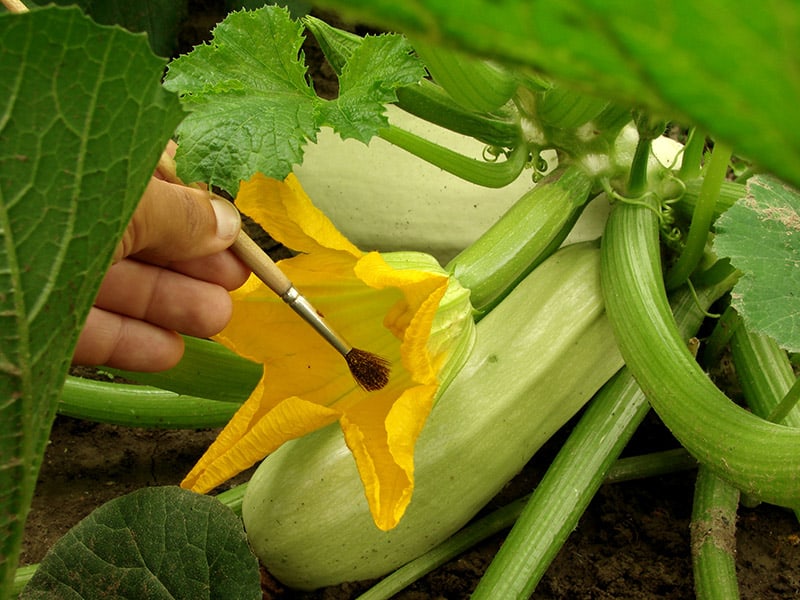
Time for you to become a pollinator.
Get a small paintbrush or cotton swab. Do this in the morning when pollen is high. Wipe the anther of the male plant to gather pollen and transplant it to the female flower by gently rubbing it on the stigma.
Do this with multiple male and female flowers. It’s effective and a simple task to complete because the zucchini flowers are quite large.
10. The Leaves Turn Yellow
There are a number of reasons why zucchini leaves turn yellow.
- Lack of sunlight. Zucchini needs between six to eight hours of sunlight a day. Yellowing leaves could mean the plant isn’t getting enough.
- Too much or too little water. You may think a zucchini plant suffering drought is the only water related issue to turn leaves yellow, but too much water will do the same thing. Keep the soil as moist as a well wrung-out sponge and you shouldn’t go wrong.
- Damaged roots. Be careful if you dig around the base of your zucchini plant because you might damage the roots. They have quite a big root system so you may be surprised how far out they reach.
Hopefully, I haven’t put you off growing zucchini because it really is an easy vegetable to grow and you won’t be disappointed. Zucchini has its problems like all plants, but it’s generally a strong and reliable crop. Provide water, food, and rotate your crops, and you’ll avoid most zucchini problems.
